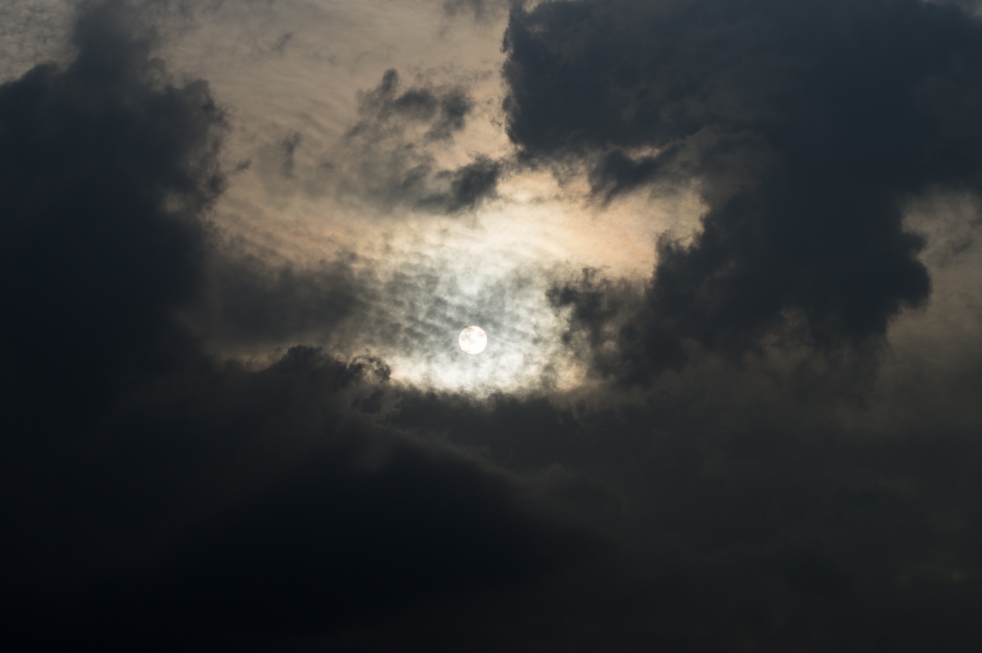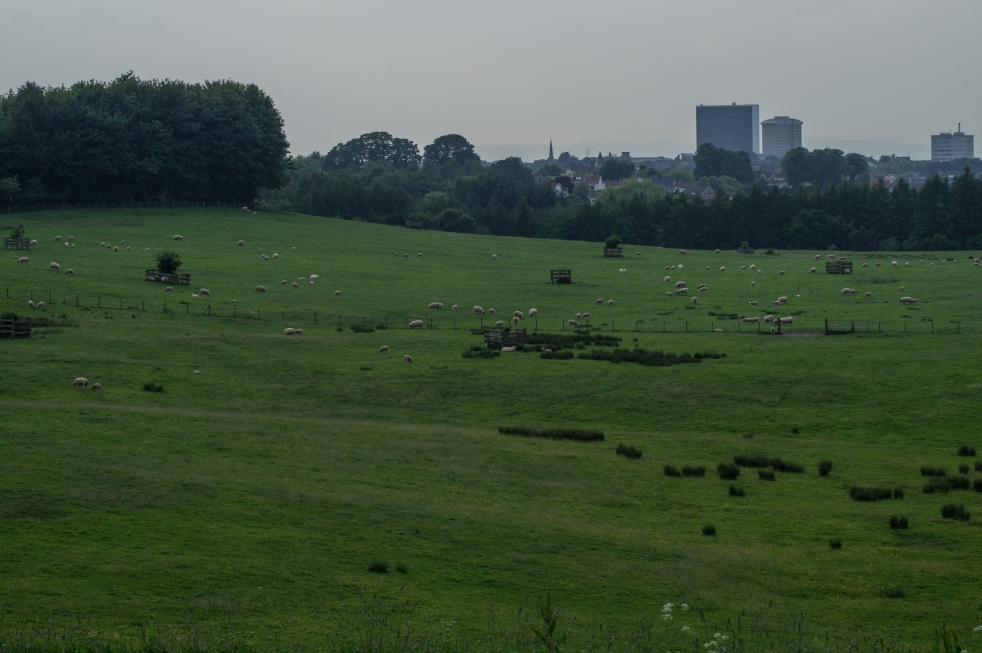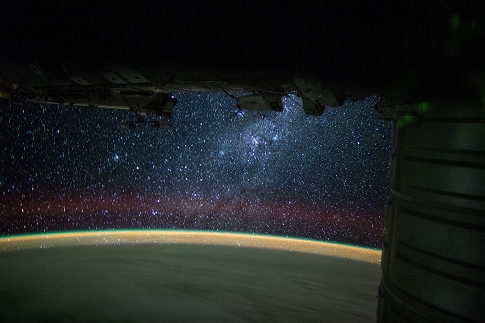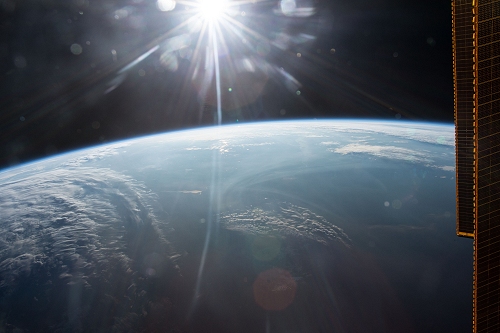It looks like you're using an Ad Blocker.
Please white-list or disable AboveTopSecret.com in your ad-blocking tool.
Thank you.
Some features of ATS will be disabled while you continue to use an ad-blocker.
share:
a reply to: ConnectDots
That is talking about solar radiation at the Earth's surface. Is that what Dollard was talking about? Didn't seem to be, seemed he was talking about solar output, not solar insolation. Pretty hard to tell what he was talking about, actually.
The Sun also produces charged particles, for which the flux can be measured.
The Sun also produces xrays, for which the flux can be measured.
The Sun also produces radio waves, for which the flux can be measured.
That is talking about solar radiation at the Earth's surface. Is that what Dollard was talking about? Didn't seem to be, seemed he was talking about solar output, not solar insolation. Pretty hard to tell what he was talking about, actually.
The Sun also produces charged particles, for which the flux can be measured.
The Sun also produces xrays, for which the flux can be measured.
The Sun also produces radio waves, for which the flux can be measured.
edit on 6/9/2016 by Phage because: (no reason given)
a reply to: wildespace
I didn't get home early enough last night but will post images tonight. My camera is a Sony SLT DSLR and has constant live live and electronic viewfinder it had no issues taking images.
I didn't get home early enough last night but will post images tonight. My camera is a Sony SLT DSLR and has constant live live and electronic viewfinder it had no issues taking images.
originally posted by: Phage
Flux of what?
If I’m not mistaken, his present work involves early detection of earthquakes for the state of California, using his knowledge and past experience working for RCA, where “radio astronomy” began.
originally posted by: Phage
The Sun also produces charged particles, for which the flux can be measured.
The Sun also produces xrays, for which the flux can be measured.
The Sun also produces radio waves, for which the flux can be measured.
Perhaps all of the above?
And maybe he’s interested in both output and insolation.
edit on 6/10/2016 by ConnectDots because: Remove extraneous text
originally posted by: ConnectDots
originally posted by: Phage
Flux of what?
If I’m not mistaken, his present work involves early detection of earthquakes for the state of California, using his knowledge and past experience working for RCA, where “radio astronomy” began.
originally posted by: Phage
The Sun also produces charged particles, for which the flux can be measured.
The Sun also produces xrays, for which the flux can be measured.
The Sun also produces radio waves, for which the flux can be measured.
Perhaps all of the above?
And maybe he’s interested in both output and insolation.
I have one question. Does he show ANY maths to do with his theory? Because ...you know you anyone can come up with an idea...but you have to prove it works. And the way you prove it is with maths.
End of story. No maths....I ain't paying attention.
a reply to: wmd_2008
This article explains a little further:
Can I damage my camera by pointing it at the sun?
www.digital-photo-secrets.com...
So perhaps with my camera it was the sheer volume of photons from the Sun warming up the sensor and it shut it down? Whenever electrons are given off by the sensor, some heat is created, so the more photons, the more heat. I think the Sunita image is evidence that the Sun at ISS altitude is quite feeble, the really intense photon density is created by Earths atmosphere.
Why the camera chose the settings it did might be explained by the fact that the background is black, whereas a bright blue sky is obviously producing a lot of photons. Might be interesting to try masking the blue sky, just having a hole, not a pinhole though, that the Sun can be seen through, and see what settings the camera comes up with? I'll try something like that with different sized holes in some black cardboard.
This article explains a little further:
Can I damage my camera by pointing it at the sun?
Ever thought about pointing your camera up at the sun? Your immediate reaction is probably a lot like mine. NO WAY! Well not so fast. It depends on the kind of camera you’re using. If you’ve got a digital SLR, you’ll be totally fine. If you’re using a point-and-shoot model, you might get into trouble. Keep reading because you’re about to find out why.
www.digital-photo-secrets.com...
So perhaps with my camera it was the sheer volume of photons from the Sun warming up the sensor and it shut it down? Whenever electrons are given off by the sensor, some heat is created, so the more photons, the more heat. I think the Sunita image is evidence that the Sun at ISS altitude is quite feeble, the really intense photon density is created by Earths atmosphere.
Why the camera chose the settings it did might be explained by the fact that the background is black, whereas a bright blue sky is obviously producing a lot of photons. Might be interesting to try masking the blue sky, just having a hole, not a pinhole though, that the Sun can be seen through, and see what settings the camera comes up with? I'll try something like that with different sized holes in some black cardboard.
a reply to: 3danimator2014
The following is not about the sun or light but it is Eric Dollard regarding "versor algebra":
The following is not about the sun or light but it is Eric Dollard regarding "versor algebra":
Published on Mar 22, 2015
versoralgebra.com... - Overview with Eric Dollard on his * NEW * release Versor Algebra as Applied to Polyphase Power Systems. Come meet Eric Dollard at energyscienceconference.com...
*I said son of Philo Farnsworth, inventor of the television, I am talking about his father being the inventor of the Television.
originally posted by: GaryN
a reply to: wmd_2008
I think the Sunita image is evidence that the Sun at ISS altitude is quite feeble, the really intense photon density is created by Earths atmosphere.
Astronauts using the Cupola module comented on how harsh the Sun is from there, giving them an almost instantaneous sun tan.
I wouldn't call the Sun in space feeble. It's glaringly white-hot out there, with none of that softening and scattering effect of our atmosphere.
originally posted by: wildespace
originally posted by: GaryN
a reply to: wmd_2008
I think the Sunita image is evidence that the Sun at ISS altitude is quite feeble, the really intense photon density is created by Earths atmosphere.
Astronauts using the Cupola module comented on how harsh the Sun is from there, giving them an almost instantaneous sun tan.
I wouldn't call the Sun in space feeble. It's glaringly white-hot out there, with none of that softening and scattering effect of our atmosphere.
From the Cupola they can only see the Sun at sunrise and sunset, and when it is visible it MUST be through Earths upper atmosphere. There are no images of a noon (iss time) Sun, they would need to look out the back window, which they never do. EVA astronauts have commented on the heat from the Sun though their visors, but only at sunrise/set. That's the only time there is any serious heat.
You have no proof that the Sun is white or hot from outside of Earths atmosphere, you are making an assumption. I want experiments, not opinions based on NASAs lack of experiments.
originally posted by: GaryN
You have no proof that the Sun is white or hot from outside of Earths atmosphere, you are making an assumption. I want experiments, not opinions based on NASAs lack of experiments.
what are three methods of heat transfer??
which one works in a vacuum??
these are easily proven even though they can be unrelated to you sun/light BS theory, just go ask why they invented the thermal flask.
originally posted by: GaryN
I want experiments, not opinions based on NASAs lack of experiments.
Funny that you mention that, because that's exactly what I called you out on regarding the "can't see stars in space" hypothesis (I'm not even gonna call it a theory). Got any experiments / maths / research to base it on, rather than the lack of the proof to the contrary?
Who was it that went to space and suddenly realised "oh gosh, I can't see any light up there, but I better keep this secret from the general public and quietly get all the space scientists and engineers enrolled on a secret education program that deals with this lack of visible light in space"?
edit on 10-6-2016 by wildespace because: (no reason given)
a reply to: wildespace
Neil Armstrong
But he didn't keep it secret, he told the world on the BBC interview.
And it is up to NASA to prove he was lying, not up to me to prove NASA is lying, I can't go where Neil went.
Who was it that went to space and suddenly realised "oh gosh, I can't see any light up there,
Neil Armstrong
but I better keep this secret from the general public
But he didn't keep it secret, he told the world on the BBC interview.
And it is up to NASA to prove he was lying, not up to me to prove NASA is lying, I can't go where Neil went.
a reply to: GaryN
You have forgot one major point with the NASA sun picture FOCAL LENGTH
NASA Sun pic
The apparent size of the sun on a FULL frame sensor in mm is the focal length divided by 110.
The Nikon use A aps-c sensor which has has a crop factor of 1.5 so the above answer has to be multiplied by that so.
The lens was 10.5mm /110 = 0.095 mm x1.5 for the crop sensor = 0.142 mm
The crop sensor on the camera is 23.7 width x 15.7mm hign, 12.84 million total pixels.
So 23.7 divided by 0.142 = 167 .
So the sun at actual image size would fit across sensor 167 times as YOU can see in the image the sun appears FAR larger because of over exposure and pixels around it being over saturated.
Here is the sun in an image I took my camera takes readings from 1200 points in the frame.

Sony SLT A37 1/4000th sec f8 iso 100 70mm focal length.
After lightroom

Picture taken after to show NO sensor damage

You have forgot one major point with the NASA sun picture FOCAL LENGTH
NASA Sun pic
The apparent size of the sun on a FULL frame sensor in mm is the focal length divided by 110.
The Nikon use A aps-c sensor which has has a crop factor of 1.5 so the above answer has to be multiplied by that so.
The lens was 10.5mm /110 = 0.095 mm x1.5 for the crop sensor = 0.142 mm
The crop sensor on the camera is 23.7 width x 15.7mm hign, 12.84 million total pixels.
So 23.7 divided by 0.142 = 167 .
So the sun at actual image size would fit across sensor 167 times as YOU can see in the image the sun appears FAR larger because of over exposure and pixels around it being over saturated.
Here is the sun in an image I took my camera takes readings from 1200 points in the frame.

Sony SLT A37 1/4000th sec f8 iso 100 70mm focal length.
After lightroom

Picture taken after to show NO sensor damage

edit on 11-6-2016 by wmd_2008 because: (no reason given)
edit on 11-6-2016 by wmd_2008 because: (no
reason given)
originally posted by: GaryN
a reply to: wildespace
Who was it that went to space and suddenly realised "oh gosh, I can't see any light up there,
Neil Armstrong
but I better keep this secret from the general public
But he didn't keep it secret, he told the world on the BBC interview.
Then I hope you'll appreciate the Apollo guys' accounts of seeing the multitude of stars when on the night side of the Moon.
a reply to: wmd_2008
Here's my effort. Camera only goes to 1/1000, ISO 100.
www3.telus.net...
While I was messing trying to get the Sun centred on the washed out display, the display went off, came back quickly when I pointed away from Sun, tried it again, same thing, so there must be a thermal shut off. Just have to quickly point and shoot.
The ISS shot used multi-segment metering, I tried it that way and get 1/1000, but with my black tube it drops to 1/204.
www3.telus.net...
With centred spot I get 1/1000 with or without the tube, even though today there is cloud around. I missed the centre of the Sun, hard to align, and I'm still seeing spots, silly fool that I am.
www3.telus.net...
So, not so simple to determine if the ISS shot tells us anything much, I'd say it should have chosen shorter exposure and slower ISO, but don't know what difference the fish-eye lens makes either.
@wildespace
Yeah, through the Star Tracker. Why no photos?
Here's my effort. Camera only goes to 1/1000, ISO 100.
www3.telus.net...
While I was messing trying to get the Sun centred on the washed out display, the display went off, came back quickly when I pointed away from Sun, tried it again, same thing, so there must be a thermal shut off. Just have to quickly point and shoot.
The ISS shot used multi-segment metering, I tried it that way and get 1/1000, but with my black tube it drops to 1/204.
www3.telus.net...
With centred spot I get 1/1000 with or without the tube, even though today there is cloud around. I missed the centre of the Sun, hard to align, and I'm still seeing spots, silly fool that I am.
www3.telus.net...
So, not so simple to determine if the ISS shot tells us anything much, I'd say it should have chosen shorter exposure and slower ISO, but don't know what difference the fish-eye lens makes either.
@wildespace
Then I hope you'll appreciate the Apollo guys' accounts of seeing the multitude of stars when on the night side of the Moon
Yeah, through the Star Tracker. Why no photos?
a reply to: GaryN
The difference the lens makes is the actual size a correctly exposed sun would be with ND filters etc.
Without those its an over exposed blob. As I explained in my previous post. The metering system has exposed for the overall frame in the NASA image which results in the VASTLY oversized/over exposed sun.
The difference the lens makes is the actual size a correctly exposed sun would be with ND filters etc.
Without those its an over exposed blob. As I explained in my previous post. The metering system has exposed for the overall frame in the NASA image which results in the VASTLY oversized/over exposed sun.
A recent night shot from the ISS, showing stars bright and clear high above even the topmost layers of the atmosphere:
eol.jsc.nasa.gov...

28 mm lens, 4 sec exposure at ISO 6400 and f/1.4
Also a recent shot, showing the Sun glaring blindingly white high above the atmosphere: eol.jsc.nasa.gov...

28mm lens, 1/640 sec exposure at ISO 200 and f/13

28 mm lens, 4 sec exposure at ISO 6400 and f/1.4
Also a recent shot, showing the Sun glaring blindingly white high above the atmosphere: eol.jsc.nasa.gov...

28mm lens, 1/640 sec exposure at ISO 200 and f/13
edit on 12-6-2016 by wildespace because: (no reason given)
originally posted by: GaryN
Neil Armstrong
But he didn't keep it secret, he told the world on the BBC interview.
And it is up to NASA to prove he was lying, not up to me to prove NASA is lying, I can't go where Neil went.
i want you to think back to this post:
Earth is much too bright of course, the camera has chosen the appropriate settings, to short an exposure for stars to show.
www.abovetopsecret.com...
and now consider how bright inside the command module is,
now also consider that the command module was constantly spinning therefore sunlight will be entering the command module periodically.
now think back to your post i just re-quoted above.
now think back to why Neil said he couldnt see stars.
now also consider how other astronauts say that you need to be dark adapted to see the stars properly.
so why do you think a bright earth can wash out the stars but a bright environment (command module interior) cannot?
and before you say that the earth is much much brighter than the interior of the command module please tell me if the earth is brighter in this image and where are all the stars??

edit on 12-6-2016 by choos because: (no reason given)
a reply to: GaryN
Wait...so you find a handful if images that you think back up your claim and that's good enough? But you ignore the dozens of links and images and image sets that have been submitted to you?
You have been repeatedly asked for evidence and this is what you dig up? A set of badly taken low light level photos?
Come on man, try harder.
Wait...so you find a handful if images that you think back up your claim and that's good enough? But you ignore the dozens of links and images and image sets that have been submitted to you?
You have been repeatedly asked for evidence and this is what you dig up? A set of badly taken low light level photos?
Come on man, try harder.
a reply to: 3danimator2014
A 15, Long exposure, 2485 film, sunrise beginning
www.lpi.usra.edu...
Some stars now visible but not outside of the corona
www.lpi.usra.edu...
From:
www.lpi.usra.edu...
Maybe the 2485 film was stale, the camera was broken, or some other lame excuse? ROTFLMAO.
Come on man, try harder.
A 15, Long exposure, 2485 film, sunrise beginning
www.lpi.usra.edu...
Some stars now visible but not outside of the corona
www.lpi.usra.edu...
From:
www.lpi.usra.edu...
Maybe the 2485 film was stale, the camera was broken, or some other lame excuse? ROTFLMAO.
new topics
-
Any one suspicious of fever promotions events, card only.
The Gray Area: 4 minutes ago -
God's Righteousness is Greater than Our Wrath
Religion, Faith, And Theology: 4 hours ago -
Electrical tricks for saving money
Education and Media: 7 hours ago -
VP's Secret Service agent brawls with other agents at Andrews
Mainstream News: 8 hours ago -
Sunak spinning the sickness figures
Other Current Events: 9 hours ago -
Nearly 70% Of Americans Want Talks To End War In Ukraine
Political Issues: 9 hours ago -
Late Night with the Devil - a really good unusual modern horror film.
Movies: 11 hours ago
top topics
-
VP's Secret Service agent brawls with other agents at Andrews
Mainstream News: 8 hours ago, 9 flags -
Cats Used as Live Bait to Train Ferocious Pitbulls in Illegal NYC Dogfighting
Social Issues and Civil Unrest: 13 hours ago, 8 flags -
Electrical tricks for saving money
Education and Media: 7 hours ago, 4 flags -
HORRIBLE !! Russian Soldier Drinking Own Urine To Survive In Battle
World War Three: 17 hours ago, 3 flags -
Sunak spinning the sickness figures
Other Current Events: 9 hours ago, 3 flags -
Nearly 70% Of Americans Want Talks To End War In Ukraine
Political Issues: 9 hours ago, 3 flags -
Late Night with the Devil - a really good unusual modern horror film.
Movies: 11 hours ago, 2 flags -
The Good News According to Jesus - Episode 1
Religion, Faith, And Theology: 14 hours ago, 1 flags -
God's Righteousness is Greater than Our Wrath
Religion, Faith, And Theology: 4 hours ago, 0 flags -
Any one suspicious of fever promotions events, card only.
The Gray Area: 4 minutes ago, 0 flags
active topics
-
SETI chief says US has no evidence for alien technology. 'And we never have'
Aliens and UFOs • 47 • : andy06shake -
Any one suspicious of fever promotions events, card only.
The Gray Area • 0 • : Cavemannick -
God's Righteousness is Greater than Our Wrath
Religion, Faith, And Theology • 1 • : andy06shake -
Sunak spinning the sickness figures
Other Current Events • 7 • : xWorldxGonexMadx -
HORRIBLE !! Russian Soldier Drinking Own Urine To Survive In Battle
World War Three • 33 • : Degradation33 -
How ageing is" immune deficiency"
Medical Issues & Conspiracies • 34 • : angelchemuel -
Nearly 70% Of Americans Want Talks To End War In Ukraine
Political Issues • 13 • : Freeborn -
Mood Music Part VI
Music • 3101 • : ThatSmellsStrange -
VP's Secret Service agent brawls with other agents at Andrews
Mainstream News • 41 • : ThatSmellsStrange -
New whistleblower Jason Sands speaks on Twitter Spaces last night.
Aliens and UFOs • 55 • : baablacksheep1
